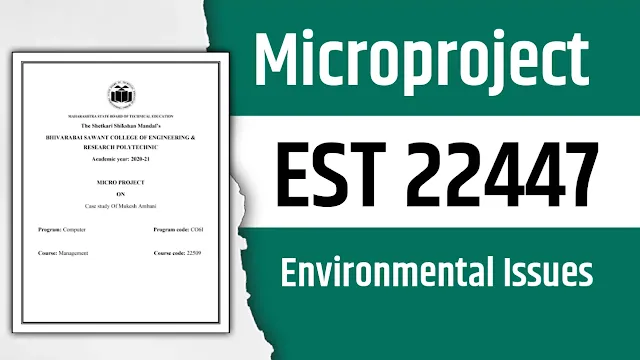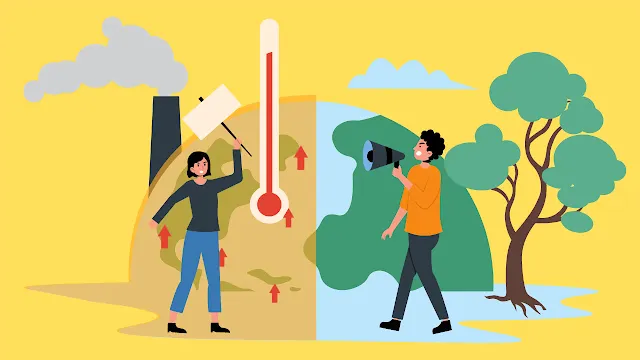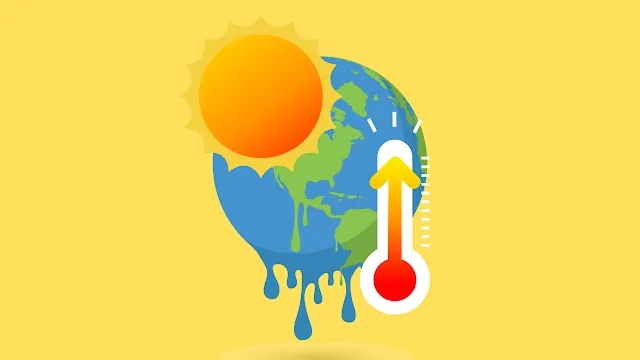Environmental Studies EST 22447 MSBTE Micro Project
program Name and Code: Environmental Studies EST 22447
Course Name and Code: CS 4 I
Academic Year :
Semester: Fourth
Annexure-I
A MICRO PROJECT ON "Environmental issues"
1.0 Aims/Benefits of the Micro Project
Aim:- To make a micro project report on Environmental issues..Advantages:- There are some big environmental challenges out there, but you don't always need to do something huge to tackle them. Micro-projects, smaller initiatives that target specific environmental issues, can actually make a big impact. And the best part is, they have tons of benefits for individuals, communities, and the environment.
2.0 Course outcome addressed.
CO1 - Develop Public awareness about the environment.
3.0 Proposed methodology
1. Focused on the selection of an appropriate topic for the micro-project.2. Select the topic i.e. To Prepare a report on Environmental issues.3. Brief study on our topic.4. Gather all information based on the topic of the micro project.5. Analysis and study of our topic in detail.6. Following all the above methodologies we successfully completed our microproject.
1. Focused on the selection of an appropriate topic for the micro-project.
2. Select the topic i.e. To Prepare a report on Environmental issues.3. Brief study on our topic.
4. Gather all information based on the topic of the micro project.
5. Analysis and study of our topic in detail.
6. Following all the above methodologies we successfully completed our microproject.
4.0 Action Plan
Sr. No. Detail of activity Plan start date Plan finish date Name of responsible team members 1 Searching the topic for micro-project 2 Search information from the Environmental Studies EST 22447 book and from the internet.
3 Discuss with the project guide. 4 arrange all information in MS Word 5 Prepare a report on it using MS Word 6 print micro project
| Sr. No. | Detail of activity | Plan start date | Plan finish date | Name of responsible team members |
|---|---|---|---|---|
| 1 | Searching the topic for micro-project | |||
| 2 | Search information from the Environmental Studies EST 22447 book and from the internet. | |||
| 3 | Discuss with the project guide. | |||
| 4 | arrange all information in MS Word | |||
| 5 | Prepare a report on it using MS Word | |||
| 6 | print micro project |
5.0 Resources used
| Sr. no. | Name of resource material | Specifications | Quantity |
|---|---|---|---|
| 1 | Computer System | 16 GB RAM, Windows 11 OS | 1 |
| 2 | Internet | Youtube / Wikipedia | |
| 3 | textbook/manual | Environmental Studies EST 22447 | 1 |
annexure-II
Micro-Project Report
A MICRO PROJECT ON "ENVIRONMENTAL ISSUES"
1.0 Brief Introduction/Rationale
The very biggest challenge of survival that the world is encountering today is the degradation of the ecosystem, depletion of natural resources, and increasing levels of pollution which are major threats to human existence. Therefore, emphasis should be on environmental aspects as they may give an understanding of different problems related to the environment. It is a discipline in itself and an Interdisciplinary field that combines physical-chemical as well as biological sciences in conjunction with environmental study. It provides an integrated, quantitative, and interdisciplinary approach to the study of environmental systems & gives an insight into solutions to environmental problems.
People's environment is getting worse day after day and due to this change in our environment, it is even more important to become more aware of to the issues in the environment the humans are creating this change. There have been an over tenfold in disasters of nature, the heats and cold, there use to be different sorts of weather all the time but now people have to be more cautious of their life do to the change with the environmental issues of earth.
Environmental Issues
Environmental issues are the negative effects of humans on the environment for example pollution, over population, garbage disposal,climate change,global warming, greenhouse effect and so on
There are number of environment protection programmes being put into practice at various levels including individual practices, organisation or business sectors and have adopted by governments, to strike a relattion ship between man and the environment.
1. Climate Change
Climate change is a long-term shift in temperatures and weather patterns. Some of these shifts might be natural, such as a variation in the Sun’s activity, or the cooling effect of a large volcanic eruption. But since the 1800s we have been, by far, the main cause of climate change, mainly due to the burning of fossil fuels such as coal, oil and gas.
When we burn fossil fuels, we release greenhouse gases that are effectively wrapping the Earth in a duvet and making it hotter and hotter.
The main culprits are the greenhouse gases released by carbon dioxide, often caused by car exhaust or heating buildings with coal, but also cleared land and forests. Methane replaces carbon dioxide in agricultural and oil and gas operations. The energy, an industrial use, transportation, the buildings sector, agriculture, and land use are the major contributors.
2. Global Warming
Global warming is a slow process of the increase of earth's surface temperature in recent time. It has been happening during one or two centuries ago and it has had an impact on earth because there is a change or differences in earth's climatic pattern. However Genaral warming is a serious issue and it is greatly debate by scientists, but there is a detail fact available for the proof that temperature of earth is arising continuously.
- Ddeforestation
Plants play a role, in maintaining the balance by absorbing carbon dioxide and releasing oxygen which is essential for our survival. Unfortunately, forests are being cleared at a rate for domestic and commercial purposes. This destructive activity has disrupted the equilibrium of our environment contributing to the problem of warming.
- Vehicle Usage
short trips in vehicles have environmental consequences due to the emissions they produce. When vehicles burn fossil fuels they release an amount of carbon dioxide and other harmful toxins into the atmosphere leading to a rise in temperatures.
- Chlorofluorocarbons (CFCs)
The excessive use of air conditioners and refrigerators by humans has resulted in the release of CFCs into the environment. These harmful substances directly affect the ozone layer, which shields our planet from ultraviolet rays emitted by the sun. The depletion of this layer due, to CFCs allows ultraviolet rays to reach Earth's surface contributing to increased temperatures.
3. Ozone Layer Depletion
The ozone layer is primarily located in the part of Earth's atmosphere. Its crucial role is to shield us from 97 99% of the ultraviolet rays emitted by the sun that can be detrimental, to life on our planet. Without this layer, numerous individuals would be prone to developing skin conditions and experiencing a weakened system.
Nevertheless, scientists have detected a depletion in the ozone layer above Antarctica. This has intensified their concerns regarding issues and prompted them to explore measures, for containment. The primary factors contributing to the formation of this ozone hole are chlorofluorocarbons, carbon tetrachloride, methyl bromide, and hydrochlorofluorocarbons.
- Chlorofluorocarbons
Chlorofluorocarbons, also known as CFCs are the culprits, behind the depletion of the ozone layer. These substances are released into the atmosphere through solvents aerosol sprays, refrigerators, air conditioners, and similar sources.
Ultraviolet radiation in the stratosphere breaks down the molecules of chlorofluorocarbons leading to the release of chlorine atoms. These atoms then react with ozone. Cause its destruction.
- Unregulated Rocket Launches
According to researchers, uncontrolled rocket launches contribute more to ozone layer depletion compared to CFCs. If not properly managed this could result in a loss of ozone by 2050.
- Nitrogenous Compounds
The presence of compounds such, as NO2. N2O plays a role in depleting the ozone layer.
4. Water Pollution
Water pollution means the dirt that clogs our water places. It includes things from factories and farms that cover rivers, lakes, oceans, and underground water sources.
This dirty water gives a tough time to all creatures that need it, directly or indirectly. Its harmful results can last for a long time.
Water pollution mainly comes from harmful chemicals soaking water bodies. Think about plastic bottles, tins, and other rubbish thrown into our waters. They dirty the water, putting humans and the entire ecosystem in harm’s way. Poison from these pollutants creeps into our food and affects us. Often, the disaster is limited to local folks and species. Yet, it could touch off worldwide trouble too.
5. Air Pollution
Think of air pollution as an unwanted change in the air. It's when bad gases, dust, and smoke dirty the air. This hurts plants, animals, and people big time.
Our atmosphere is home to various gases. Any increase or decrease in these gases can be really dangerous. This gas balance has been out of whack, heating the earth. We call this global warming.
Fossil Fuel Combustion
Fossil fuels, when burned, let out a lot of sulphur dioxide. Incomplete burning of these fossil fuels releases carbon monoxide. It contributes to air pollution.
Vehicle Emissions
Exhaust from vehicles like buses, cars, trucks, and jeeps harms the environment. They emit a major portion of greenhouse gases and are linked to various health issues.
Farming Operations
Ammonia, a dangerous gas, is released during farming operations. Insecticides, pesticides and fertilisers also discharge toxic chemicals into the air.
Industrial Outputs
Factories and industries pump out carbon monoxide, organic compounds, hydrocarbons, and other chemicals. When these pollutants enter the air, it diminishes its quality.
2.0 Actual Resources Use
Sr. no. Name of resource material Specifications Quantity 1 Computer System 12 GB RAM, Windows 11 OS 1 2 Internet Youtube / Wikipedia 3 textbook/manual Environmental Studies EST 22447 1
| Sr. no. | Name of resource material | Specifications | Quantity |
|---|---|---|---|
| 1 | Computer System | 12 GB RAM, Windows 11 OS | 1 |
| 2 | Internet | Youtube / Wikipedia | |
| 3 | textbook/manual | Environmental Studies EST 22447 | 1 |
3.0 Skill Developed
1. Teamwork 2. Communication skills 3. Able to get all information about environmental issues.
1. Teamwork
2. Communication skills
3. Able to get all information about environmental issues.
4.0 Outputs of the Micro-Project
we successfully make a microproject report on environmental issues.
| we successfully make a microproject report on environmental issues. |








